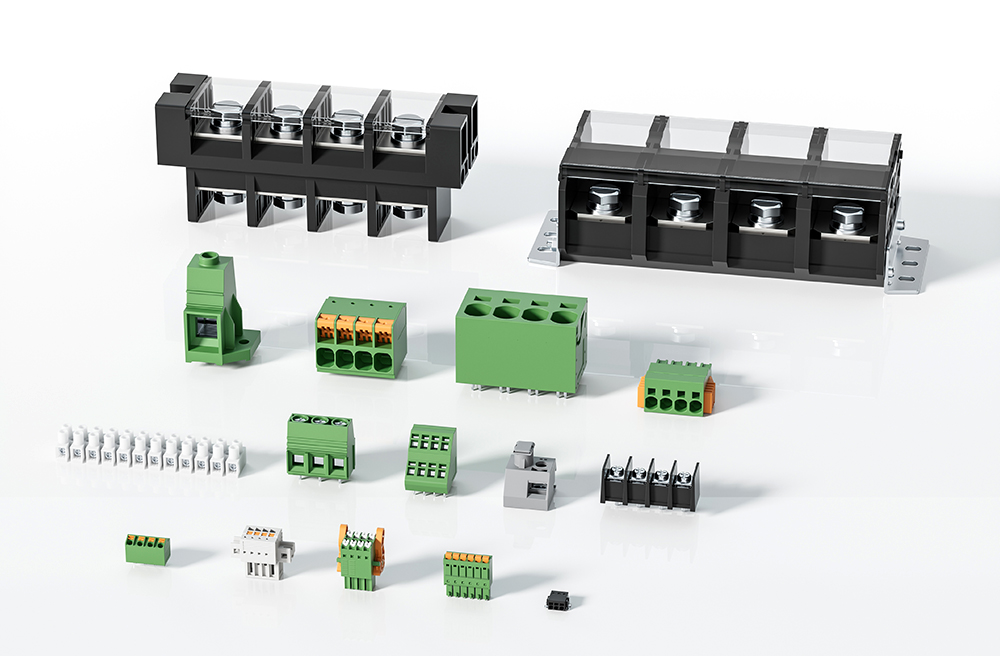- All
- Product Name
- Product Keyword
- Product Model
- Product Summary
- Product Description
- Multi Field Search
Views: 102 Author: Site Editor Publish Time: 2023-10-02 Origin: Site
Energy storage connectors play a crucial role in the efficient and reliable operation of energy storage systems. However, like any electrical component, energy storage connectors can experience issues that can affect their performance and reliability. Here are some common problems with energy storage connectors and how they can be solved:
Loose connections: A common issue with energy storage connectors is loose connections. Loose connections can cause high resistance, overheating, and even fire hazards. To solve this problem, ensure that the connectors are tightened to the recommended torque specifications. It is also important to inspect the connectors regularly to ensure that they are still secure.
Corrosion: Energy storage connectors can be exposed to harsh environmental conditions that can cause corrosion. Corrosion can cause increased resistance, which can lead to overheating and system failures. To prevent corrosion, use connectors with high-quality coatings that are designed to resist corrosion. Regular inspection and cleaning of connectors can also help prevent corrosion.
Overheating: Overheating is a common issue with energy storage connectors, especially when they are subjected to high current loads. Overheating can cause damage to the connectors, insulation, and the energy storage system itself. To prevent overheating, ensure that the connectors are appropriately sized for the current loads they will be subjected to. Cooling systems can also be used to dissipate heat and prevent overheating.

Misaligned connectors: Misaligned connectors can cause high resistance and damage to the connectors and the energy storage system. To prevent misalignment, ensure that the connectors are installed correctly and that they are aligned properly. It is also important to inspect the connectors regularly to ensure that they are still aligned correctly.
Contamination: Energy storage connectors can be exposed to dirt, dust, and other contaminants that can cause increased resistance and overheating. To prevent contamination, use connectors that are designed to resist contamination, and ensure that the connectors are installed in a clean environment. Regular cleaning and inspection can also help prevent contamination.
Improper installation: Improper installation can cause damage to the connectors and the energy storage system. It is important to follow the manufacturer's installation instructions carefully and to use the correct tools and equipment. If you are not comfortable installing the connectors, it is best to hire a professional electrician or installer to do the job.
In conclusion, energy storage connectors are critical components in energy storage systems. To ensure their optimal performance and reliability, it is important to address any issues that arise promptly. Loose connections, corrosion, overheating, misaligned connectors, contamination, and improper installation are some common problems with energy storage connectors. Regular inspection, cleaning, and maintenance can help prevent these issues from occurring and ensure the safe and reliable operation of energy storage systems.
This article covers the technical features of spring-loaded and push-in terminals, and both the advantages and disadvantages of these technologies when it comes to installation practices, commissioning, footprint and authorisation for the North American market. Why do we need spring terminal block ?
Wiring a terminal block correctly is a fundamental skill in electrical work, ensuring safe and reliable connections. This article will help you to understand the essential steps, from preparing your wires to securing them properly within various terminal block types.ContentWhat are Terminal Blocks?R
What is terminal block ?terminal block, also known as a connection terminal, is a modular block used in electrical and electronics systems to connect and secure electrical wires or cables. It serves as a convenient and organized way to make electrical connections, whether for power distribution, sig
Terminal electronics is the key point at which a conductor from a electronic component, device or network comes to an end.Terminal may also refer to an electrical connector at this endpoint, acting as the reusable interface to a conductor and creating a point where external circuits can be connected
Spring connectors, also known as spring-loaded connectors or pogo pins, are electrical connectors that use spring-loaded contacts to establish a temporary electrical connection. These connectors are commonly used in applications where repeated connections and disconnections are required, such as in
PCB terminal blocks are a vital electronic components in many electronic applications systems, allowing secure and reliable connections between printed circuit pcb boards and external wires. These terminal blocks are available in a variety of sizes, types, and materials to meet the specific needs o